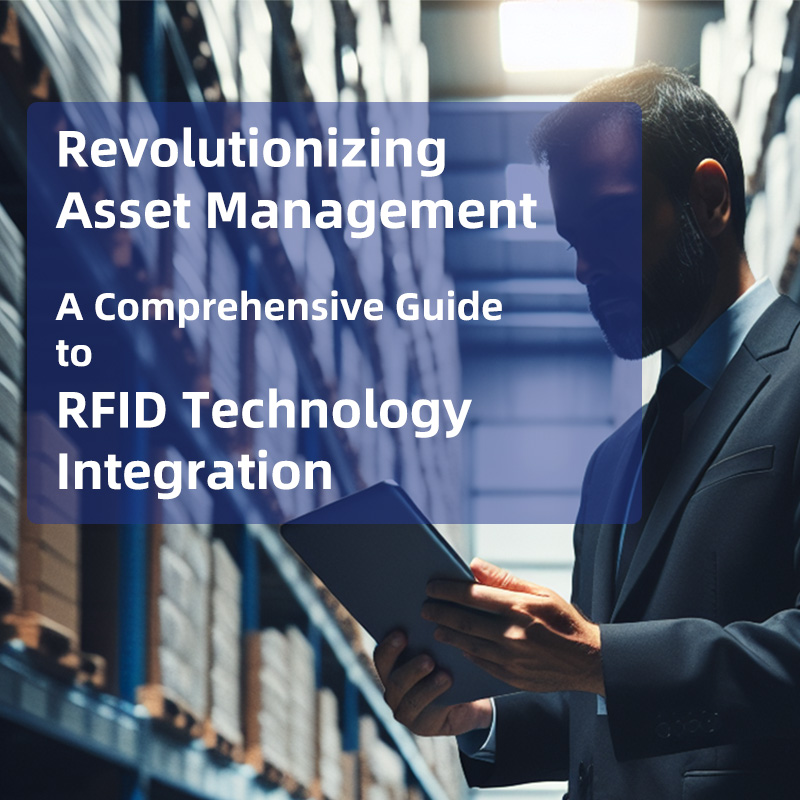Your location: Home Page > RFID Blog | SILION TECH > Revolutionizing Asset Management: A Comprehensive Guide to RFID Technology Integration
News and Information
Revolutionizing Asset Management: A Comprehensive Guide to RFID Technology Integration
Author:2024-01-18 12:21:02
In today's fast-paced business environment, effective asset management is crucial for streamlined operations. Radio-frequency identification RFID technology has emerged as a game-changer, offering a seamless solution to track and manage assets. In this blog post, we'll delve into the strategic planning, asset tagging methods, RFID reader integration, and automated auditing processes, along with essential tools for data analysis and report generation.

Strategy and Planning for RFID Technology Integration:
Before diving into RFID technology integration, it's essential to develop a comprehensive strategy. Begin by identifying the key objectives and requirements of your asset management system. Consider factors such as the types of assets you'll be tracking, the scale of your operations, and the desired level of automation.
Create a roadmap outlining the implementation process, setting realistic milestones, and allocating resources effectively. Engage key stakeholders to ensure alignment with organizational goals, and don't forget to account for any regulatory or compliance considerations.
Process and Methods for Asset Tagging:
Asset tagging is the backbone of RFID technology integration, as it involves assigning unique identifiers to each asset. This can be achieved through various tagging methods, such as barcode labels, QR codes, or custom RFID tags.
Choose a tagging method that aligns with your specific needs and budget. RFID tags, in particular, offer the advantage of wireless communication, enabling real-time tracking and data retrieval. Ensure tags are durable and can withstand environmental factors to guarantee accurate and reliable data capture throughout the asset lifecycle.
Layout and Integration of RFID Readers and Networks:
The next step is to strategically place RFID readers and establish a robust network infrastructure. Carefully map out the locations where assets will be read and tracked, considering factors like signal range, interference, and potential obstacles.
Integrate RFID readers seamlessly into your existing network architecture to facilitate data communication. Implementing a centralized RFID management system ensures real-time visibility and control over your assets. Regularly assess the system's performance and make adjustments as needed to optimize efficiency.
Design and Implementation of Automated Auditing Processes:
Automation is a key advantage of RFID technology, enabling businesses to conduct audits efficiently and with minimal human intervention. Develop automated auditing processes that align with your organization's needs. This may involve setting up periodic asset scans, exception alerts for missing or misplaced items, and automated reporting.
By leveraging RFID technology for auditing, you reduce the likelihood of human error and improve the accuracy of asset tracking. This not only saves time but also enhances the overall reliability of your asset management system.
Tools for Data Analysis and Report Generation:
To derive meaningful insights from the wealth of data collected through RFID technology, employ powerful tools for data analysis and report generation. Utilize analytics platforms that can process and visualize the data, offering actionable intelligence.
Customize reports to meet specific business requirements, providing stakeholders with valuable information on asset utilization, location trends, and maintenance needs. Regularly review and update these reports to adapt to changing business dynamics and optimize asset management strategies.
The integration of RFID technology into your asset management system is a strategic move that can revolutionize how you track, manage, and optimize your assets. By carefully planning the implementation process, employing effective asset tagging methods, integrating RFID readers, automating auditing processes, and utilizing powerful data analysis tools, you position your organization for enhanced efficiency and productivity.
Embrace the power of RFID technology, stay ahead of the curve, and transform your asset management practices for a more streamlined and competitive future.